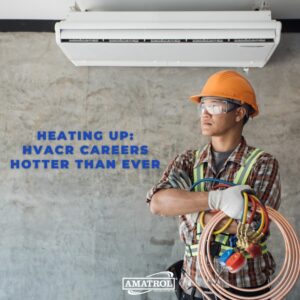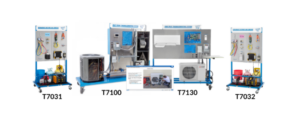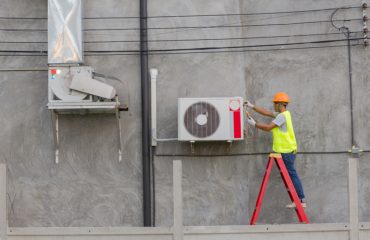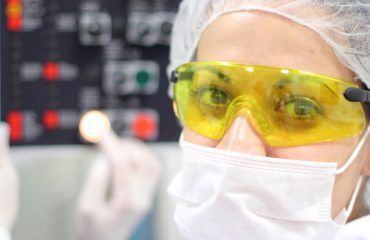 What’s hotter than the temperatures currently scorching most of the United States? Quite appropriately, careers in heating, ventilation, air conditioning, and refrigeration (HVACR) are hotter than ever.
What’s hotter than the temperatures currently scorching most of the United States? Quite appropriately, careers in heating, ventilation, air conditioning, and refrigeration (HVACR) are hotter than ever.
With heat wave after heat wave and temperatures setting new records year after year, the demand for qualified HVACR installers and technicians is greater than ever. Unfortunately, supply isn’t keeping up with demand, creating a critical shortage of these important workers.
In addition to simply not having enough HVACR workers, modern advancements in smart technologies being incorporated into HVACR products has created a need for HVACR workers with new, cutting-edge technology skills. This HVACR skills gap has left many companies scrambling to find the highly-skilled workers they so desperately need.
In this article, we’ll take a closer look at some of the underlying causes of the current HVACR skills gap and worker shortage. We’ll also detail steps Amatrol is taking to provide tools to train the next generation of HVACR workers.
How Bad is the HVACR Worker Shortage?
There are “Now Hiring” signs everywhere you look these days. In the continuing wake of the COVID-19 pandemic, businesses across the board lack necessary workers to function effectively and efficiently.
The story is no different in the HVACR industry. In many ways, it’s worse. According to an Emerson Climate Conversations blog article by Don Gillis, “[n]early 40 percent of the jobs available in the HVACR industry are unfilled. That’s about 80,000 good-paying positions for technicians who can install, maintain and repair…critical refrigeration equipment.”
Experts believe the problem is only going to worsen in the future. According to a San Joaquin Valley College Blog article, “the Bureau of Labor Statistics expects the number of Heating, Ventilation, Air Conditioning and Refrigeration (HVAC-R) mechanic and installer jobs to increase significantly [in coming years].”
Indeed, an article by The Air-Conditioning, Heating, and Refrigerating Institute (AHRI) in The Future of Business and Tech blog reports that “[t]he Bureau of Labor Statistics estimates heating, ventilation, air-conditioning, and refrigerating (HVACR) jobs will increase 15 percent per year through 2026; more than twice the average for all other occupations.”
Gillis sums up the bleak situation succinctly: “If we do not hire and train new technicians, our industry could potentially face a deficit of 100,000 workers within the next five years.” So what can be done to increase the number of HVACR workers and bridge the HVACR skills gap?
Fixing the HVACR Worker Shortage
As Gillis notes in his article, one of the primary factors contributing to the ongoing shortage of HVACR workers is the loss of current workers already in the field: “our industry loses experienced technicians as aging workers retire and also as the result of normal attrition every year.”
This fact highlights the need for a steady stream of new, highly-skilled supply of workers entering the HVACR field every year. To date, though, supply has lagged significantly behind demand.
It’s a frustrating puzzle for industry employers. As the San Joaquin Valley College Blog article notes, “[t]he industry also offers good pay – average salaries are over $49,000, plus bonuses and overtime. But despite the potential appeal of working as an HVACR technician, the number of new entrants in the field is failing to keep pace with America’s growing demand.”
Gillis points out that students should consider a career in HVACR, because “[t]he reality is that there’s an abundance of lucrative opportunities for young people who want a long-term career path without the time commitment and cost of a four-year college education.” In particular, Gillis notes that HVACR careers should appeal to students looking to “make an impact,” “work with cutting-edge tools and technologies,” “achieve job security,” and “earn while they learn” through apprenticeship programs.
The chance to work with cutting-edge tools and technologies is a benefit of HVACR careers that actually contributes to the ongoing HVACR skills gap. As Gillis notes, “[m]odern refrigeration and air conditioning applications utilize advanced controls, software and remote diagnostics capabilities.”
However, there simply aren’t enough workers with these advanced skills to keep up with demand. That’s why the AHRI notes that “the HVACR industry is committed to finding a new pool of dedicated people to begin a career that offers positions that can never be outsourced and will remain on the cutting edge of new technology.”
How will they do this? The AHRI points to “[a] 2015 report by the HVACR Workforce Development Foundation [that] outlined recommendations to lessen the shortfall, which included finding ways to recruit students into HVACR job training, developing a unified program for accreditation and certification, and training the trainers.”
How Amatrol Can Help Bridge the HVACR Skills Gap
The experts at Amatrol know that technical training for HVACR is more important than ever. The next generation of HVACR technicians must possess the right combination of knowledge and hands-on skills to meet the demands of desperate employers.
With more than 30 years of experience designing and manufacturing state-of-the-art training systems, Amatrol remains the world’s leader in skills-based, interactive technical learning for industry and education. What sets Amatrol apart is its dedication to providing comprehensive training solutions that integrate in-depth multimedia eLearning curriculum with hands-on trainers that feature real-world industrial components.
Amatrol’s HVACR program offers a variety of technical training solutions for both industry and education. For a taste of what Amatrol’s HVACR training includes, explore the following training systems that provide comprehensive, hands-on training in key HVACR areas:
- Residential Heat Pump Troubleshooting Learning System (T7100): teaches the critical hands-on skills HVACR technicians need to succeed when working with residential HVAC systems that use a heat pump and traditional ducting. Learners will work with real equipment, such as: a heat pump condenser, heat pump air handler, Wi-Fi-enabled thermostat, fuse box, ducting, and manifold. In addition to developing hands-on skills with real equipment, learners will use Amatrol’s interactive multimedia eLearning curriculum to cover a wide variety of fundamental residential heat pump topics, including: thermostat operation, pressure and temperature measurements, component tests, and system troubleshooting.
- Residential Mini-Split Heat Pump Learning System (T7130): teaches the critical hands-on skills HVACR technicians need to succeed when working with residential ductless (“mini-split”) HVAC systems. Learners will work with real equipment, such as: a heat pump condenser, evaporator unit, thermostat, panel-mounted gauges, and condensate pump. In addition to developing hands-on skills with real equipment, learners will use Amatrol’s interactive multimedia eLearning curriculum to cover a wide variety of fundamental residential mini-split system topics, including: remote controller adjustments, heating and cooling modes, LED indicators, communication between units, and system troubleshooting.
- Refrigerant Recovery and Charging Learning Systems for R-134a/R-410a (T7031/T7032): teach aspiring HVACR technicians the critical hands-on skills they need to succeed on the job. Learners will work with real equipment, such as: a recovery machine, manifold gauges, submersible cooler, temperature probe, filter dryer, low side liquid charger, vacuum pump, and micron vacuum gauge. In addition to developing hands-on skills with real equipment, learners will use Amatrol’s interactive multimedia eLearning curriculum to cover a wide variety of relevant refrigerant recovery and charging topics, including: refrigerant fundamentals, leak detection, pressure and temperature measurement, refrigerant recovery and recycling, and refrigerant charging.
- Basic Refrigeration Learning System (T7045): teaches basic refrigeration skills used by technicians in industrial, residential and commercial HVACR settings. The T7045 covers topics including temperature and pressure measurement, heat transfer, and phase change. Transparent sections in the refrigerant lines allow students to observe the refrigerant as it changes from gas to liquid as it travels through various components. Temperature and pressure gauges are installed in multiple locations providing students a better understanding of how the refrigeration cycle works.
- Combined Refrigeration Installation Learning System (T7200): teaches installation of electrical and mechanical refrigeration/air conditioning components in residential or light commercial applications. The Combined Refrigeration Installation Learning System includes evaporator and condenser coils, a hermetically-sealed compressor, a filter/drier, and many more real-world industrial components that allows learners to practice skills with components that they’ll find on-the-job. The included multimedia curriculum covers topics like: copper tubing, refrigerant line routing and bending, flaring and swaging copper tubing, brazing and soldering refrigerant lines, and copper tubing insulation.

Whether you’re a high school or college instructor, an employer, or a state or local official looking to implement new strategies to prepare students and current workers for the highly-skilled jobs currently in demand, Amatrol can help. Consult with an expert at Amatrol today to learn how you can take the first step toward teaching your students or current workers the skills that will set them up for success in the modern workplace.
About Duane Bolin
Duane Bolin is a former curriculum developer and education specialist. He is currently a Marketing Content Developer in the technical training solutions market.





